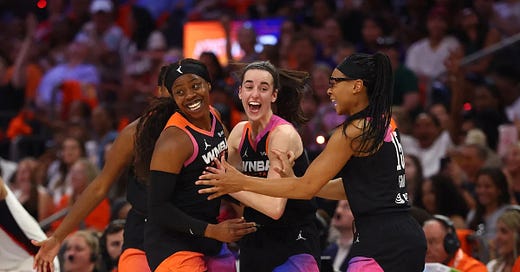Five Out: An all-time All-Star game, broadcast deals and the difference between yesterday's price and today's...
Despite a break in the action, there's still plenty to talk about in the world of women's basketball. A looming labor fight, an incredible Arike Ogunbowale performance and so much more...
There’s no doubt about it. 2024 WNBA All-Star weekend was a smash hit. Even with concerns over a lack of star power in the skills challenge and 3 point shooting contest, there were plenty of stories, content and generally good vibes to go around. No Cap Space had boots on the ground all weekend, getting some of th…
Keep reading with a 7-day free trial
Subscribe to No Cap Space WBB to keep reading this post and get 7 days of free access to the full post archives.




